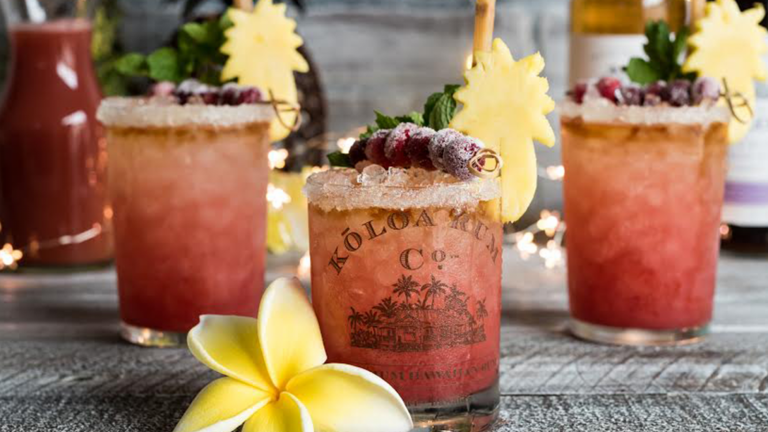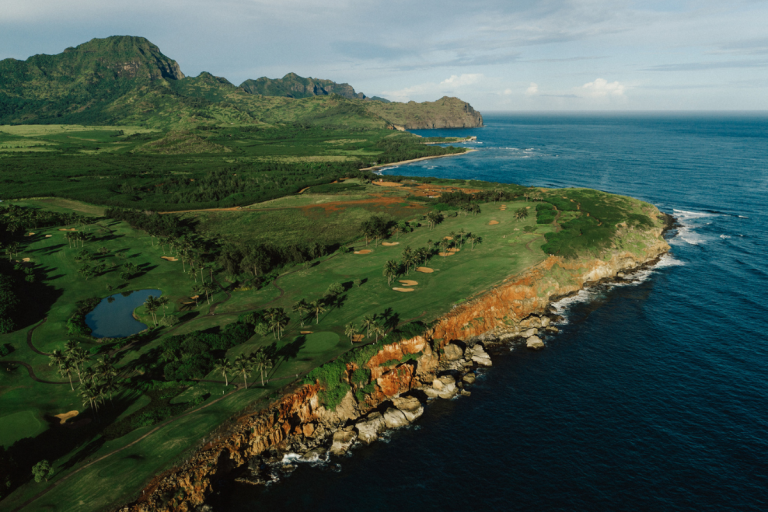It may be a simple concept, but you can’t help but smile in awe at Reef’s Real Fruit Ice Cream truck. And that’s the goal for Abby Alvin, owner of the vibrant food truck in Kīhei, Maui. With a huge grin, she says it brings her joy watching her customers’ reactions—whether it’s their first or tenth time to her business—as they watch their ice cream swirl out of the machines.
Real fruit ice cream originated in New Zealand, where it’s become ubiquitous. There, shops blend ice cream with real frozen fruit, churning out delicious desserts.
Unlike traditional ice cream, which is often made with artificial coloring, extracts and fruit syrups, this style of dessert incorporates real fruit, resulting in vibrant colors and refreshing flavors that are aren’t overly sweet.

Photo: Grace Maeda
New Zealand-style of ice cream is gradually making its way to Hawaiʻi, with Soulberry Ice Cream in Makawao and a few shops scattered on Oʻahu.
Down in Kīhei, you can’t miss Reef’s Real Fruit Ice Cream truck: It’s peach-colored, with a vibrant fruit mural adorning one side.
For customers of all ages, it’s an exciting choose-your-own adventure at the adorable spot, from selecting an ice cream base of vanilla or nondairy coconut to the variety of fruit. Here, you can opt for a single fruit or blend them, with options ranging from strawberries and blackberries to mango and pineapple. You can also sprinkle toppings like graham crackers and granola, too.
Fortunately, if you love your cone of real fruit ice cream and absolutely need more, you can order a freshly made pint to take to go.
Alvin says an important ingredient to her business is sourcing ice cream from local companies and when possible, incorporating local fruits that are in season, such as dragon fruit and lilikoʻi. (Tip: If available, order the dragon fruit and lilikoʻi together!)

Photo: Courtesy of Reef’s Real Fruit Ice Cream
Perched just outside South Maui Gardens, the ice cream stand celebrated its one-year anniversary in November 2025. Alvin says the support from the community and neighboring businesses has been immense and heartwarming—throughout the past 12 months and leading up to opening. She recalls her pickleball community and other local businesses checking in and offering help as she prepared to launch the business, which she says was five years in the making.
During a trip to New Zealand years ago, Alvin was instantly hooked on the country’s signature style of ice cream. She made it a mission to order and taste as many variations of the dessert as possible.
When Alvin returned to the U.S., the idea of opening her own ice cream shop kept churning in her head. “The thought of starting my own company was intimidating,” she admits. But with the encouragement of her husband, Connor McCormack, she decided to go for it.
On Nov. 22, 2024, the couple opened the shop—named after their dog, Reef. On opening day, they recall serving more than 200 customers. “It was the coolest opening day,” Alvin says.
The entrepreneur admits, “It’s tough opening a business with a product people don’t know a lot about, but it’s also exciting.”

Photo: Grace Maeda
Alvin turned Reef’s Real Fruit Ice Cream into a fun and even mesmerizing experience. With special ice cream machines positioned in the window, customers can watch their sweet desserts swirl into cones. “People are fascinated by the machines,” Alvin says with a laugh.
McCormack adds it’s been rewarding to see local customers keep returning. “It’s been cool to get to know local families.”
The excitement and joy Alvin and McCormack share for ice cream is contagious. It’s evident the couple pours love and passion into their business, along with deep gratitude for their community. Looking ahead, Alvin and McCormack plan to expand Reef’s Real Fruit Ice Cream with additional locations on Maui in 2026.
Reef’s Real Fruit Ice Cream is a place you’ll want to return to again and again. Fortunately, with more locations on the horizon, it’ll be easier to do so.



